Although the village of Tay Tuu was one of the last to shift from traditional farming to cultivating flowers, following the lead of villages like Ngoc Ha and Quang Ba, it has blossomed into the largest flower growing area of Hanoi.
Switching from traditional farming to flower cultivation
Prior to 1994, Tay Tuu was a rice-growing area in suburb of Hanoi. The villagers only changed to growing flowers when the traditional flower villages of Ngoc Ha and Xuan Dinh gradually lost their land for flower cultivation because of the rapid process of urbanization. They had to rent extra land in the suburbs of Hanoi to grow flowers.
The farmers in Tay Tuu started their flower business with only 18 ha on a trial basis. However, when the crops brought in good profits and the standard of living in the village improved markedly, all the households in the village became involved in flower cultivation.

Lys flowers are ready for harvesting in Tay Tuu. Photo: Van Quyen/VNP
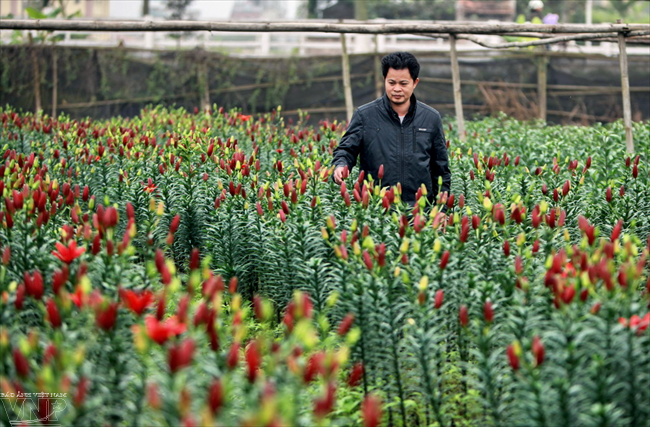
The lys field of Nguyen Van Xuan in Tay Tuu provides lys for the northern market. Photo: Van Quyen/VNP |
After 20 years, the village has nearly 300 ha for growing flowers, accounting for 84.6% of the commune’s total farming area and has becomes the largest flower growing area in Hanoi. The village is famous for its large variety of beautiful flowers, such as roses, gerberas, dahlias, gladiolus and daisies that not only grace local markets but are also exported abroad. On average, the per ha yield brings the village 300 million dong each year.
Since 2008, Tay Tuu flower growers continued to drastically shift the structure of the flower varieties to meet the different tastes of customers. They replaced traditional flowers with new varieties such as lys which requires the application of high technology in farming and tending. This restructure was evaluated as a turning point to help affirm the village’s flower trademark in the market.
Forming a high-tech flower growing area
Leaving the area of growing traditional flowers, we arrived in the lys-growing area in Ha Mo Commune in Dan Phuong District and visited the family of Nguyen Van Xuan who was the first farmer to grow lys.
Nguyen Van Xuan took us to his 5ha lys field which had modern net houses and an automatic watering and temperature measuring system. His family now cultivates dozens of lys varieties imported from the Netherlands which are in big demand. The demand for this variety is always much larger than the supply.
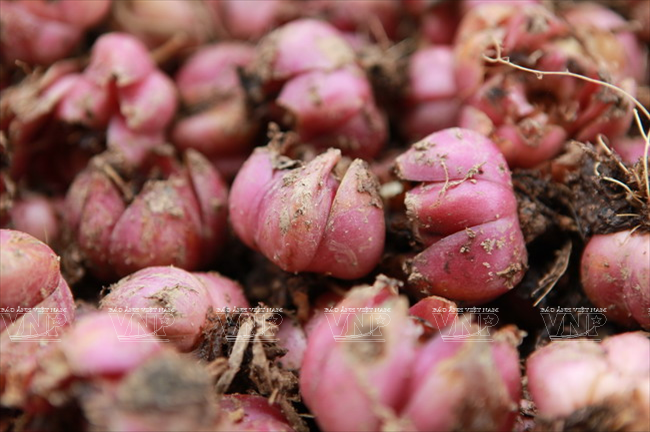
After each harvest, roots of lys trees are collected for growing the next crop. Photo: Van Quyen/VNP
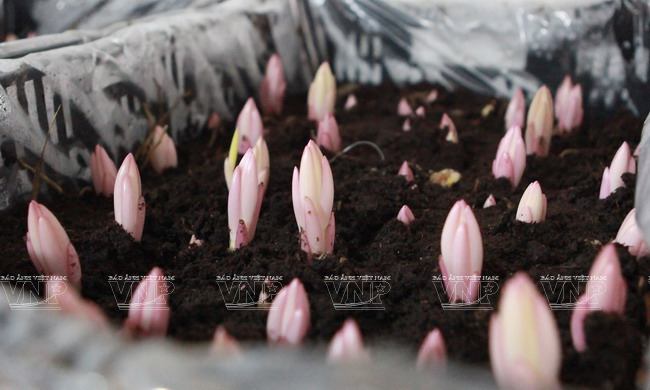
Lys seedlings of more than a week old. Photo: Van Quyen/VNP
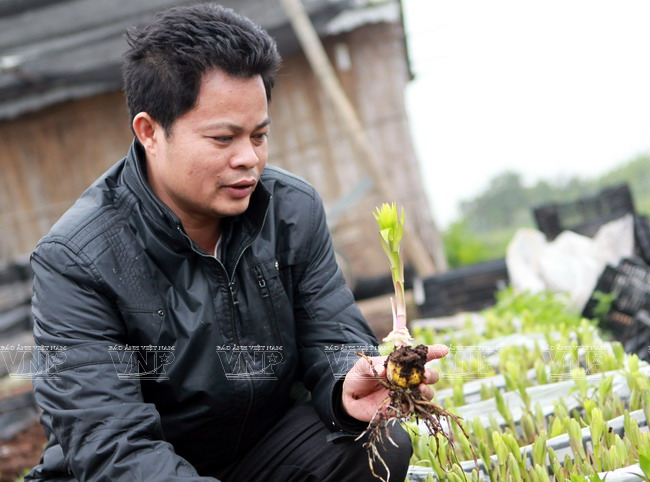
Nguyen Van Xuan and lys seedlings of about 15 day old which are ready for planting in the field.
Photo: Van Quyen/VNP
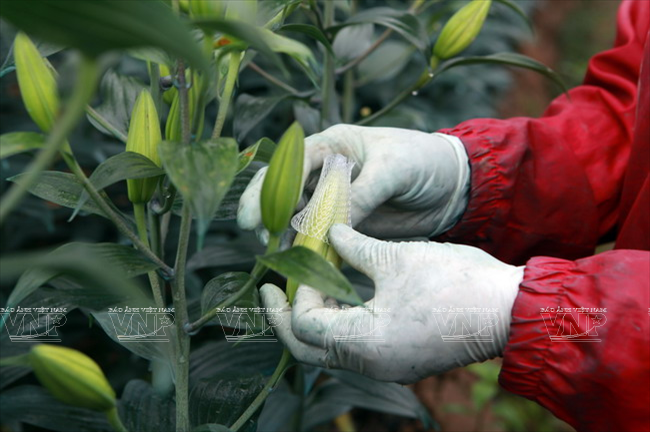
Carefully tendered lys fields in TayTuu give big and beautiful blossoms. Photo: Van Quyen/VNP
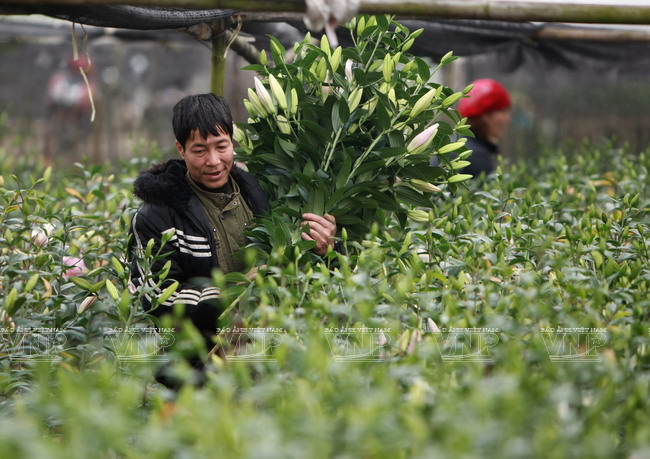
Each day, Nguyen Van Xuan’s family employs tens of people to work in the lys fields. Photo: Van Quyen/VNP
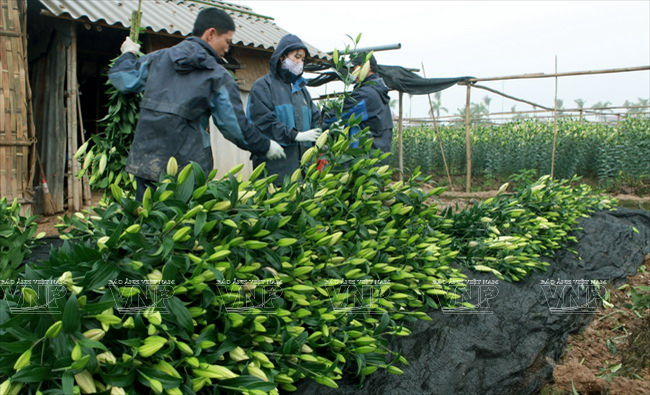
Merchants from neighbouring areas buy lys flowers from Nguyen Van Xuan’s field.Photo: Van Quyen/VNP
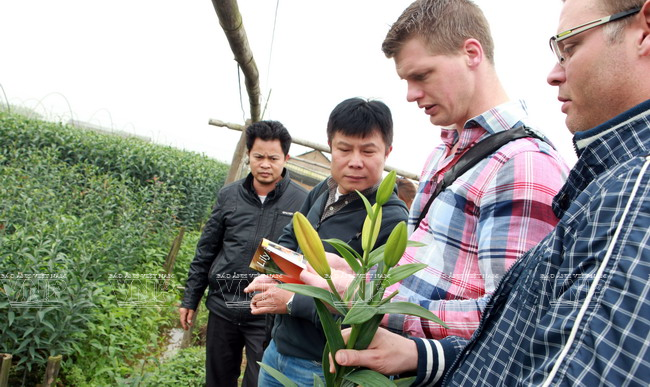
Dutch experts consult on methods to grow a variety of lys in Tay Tuu. Photo: Van Quyen/VNP |
«
Tay Tuu provides the market in the North with about 250 million flowers each year and about 95% of households in the commune are involved in flower farming.
According to Tay Tuu Commune’s statistics, the total investment for growing lys of households in Tay Tuu is about 500-600 billion dong, which is a record amount invested in floriculture.
» |
Xuan said that the villagers in Tay Tuu started cultivating lys in 2000 and at that time this variety of flower was quite strange to the locals. With his experience of many years involved in floriculture, Xuan decided to invest and expand the area for growing this flower variety and he has now become “The Billionaire of Lys”. Growing flowers is as difficult as growing rice, but the revenue from flowers is much higher. This has prompted many households in Tay Tuu to concentrate on growing lys. There were only a few farmers growing lys in 2008, and now over 60% of households in the area are engaged in cultivating this variety. The lys farming area considerably increased to about 200ha in 2013. The area for growing lys in Tay Tuu is 38ha while the extra land is rented from neighboring communes in the districts of Hoai Duc, Dan Phuong and Thach That. Xuan proudly showed his immense field covered in lys. The colourful field is testimony to his efforts as well as those of other successful flower growers in the village.
It is a short time since the locals in Tay Tuu shifted to growing flowers in comparison with the 80 year history of Da Lat to build its flower trademark. However, it is expected that in the near future Tay Tuu will become a high-tech flower growing area in Hanoi, being able to provide both traditional and high-tech flowers to the northern market.
Story: Thao Vy - Photos: Van Quyen